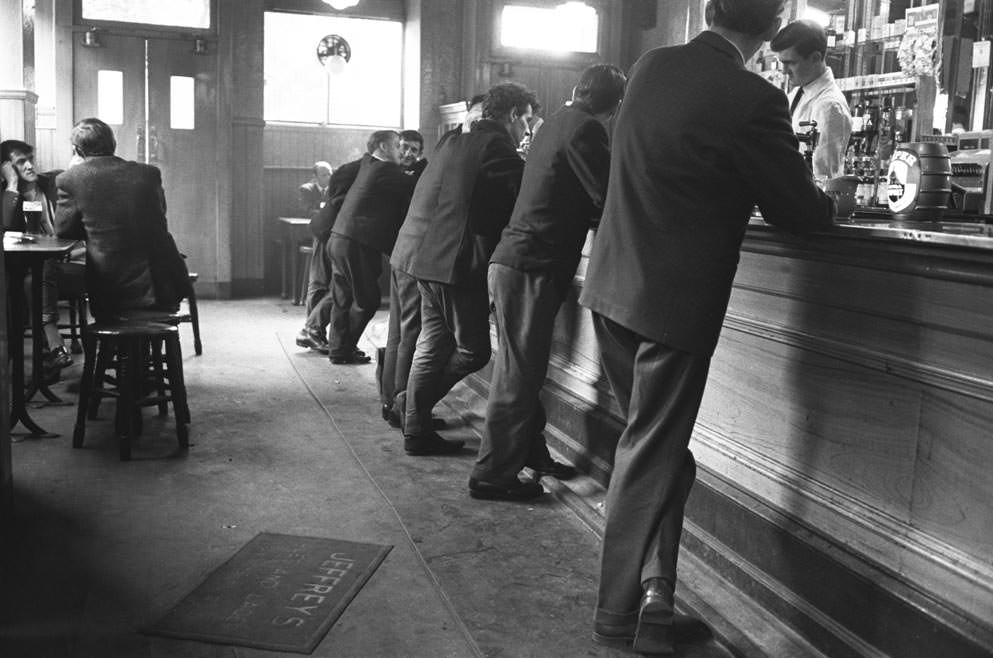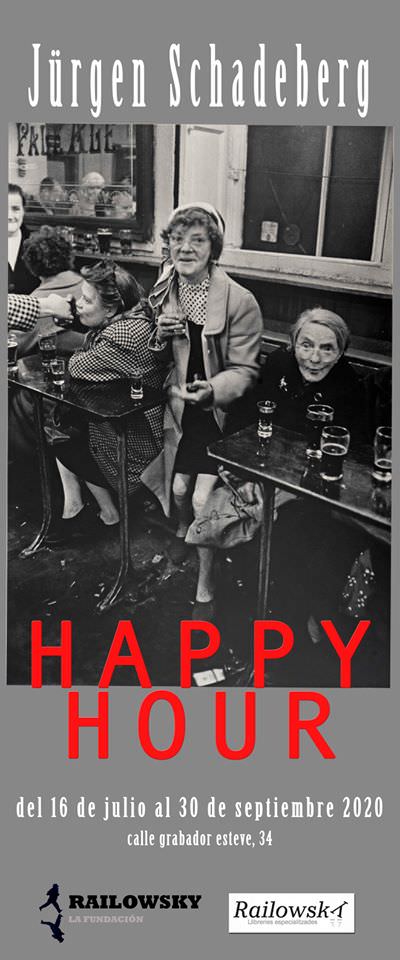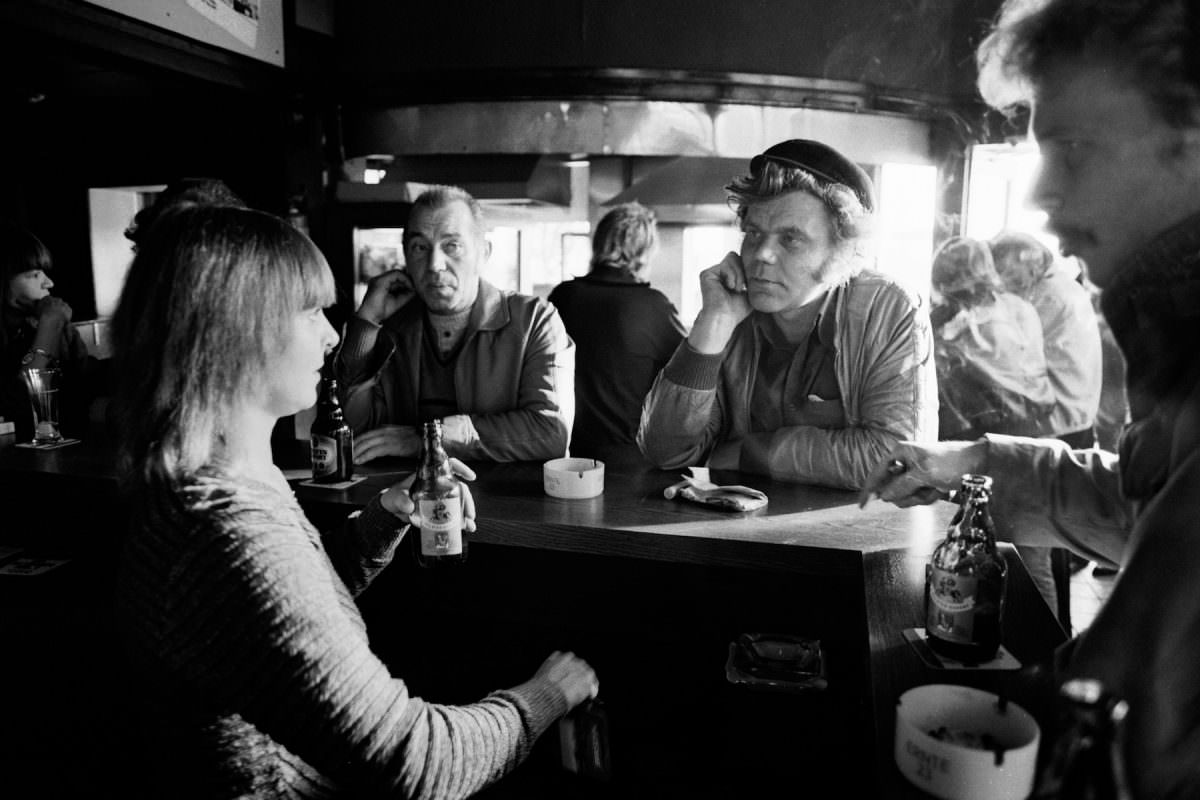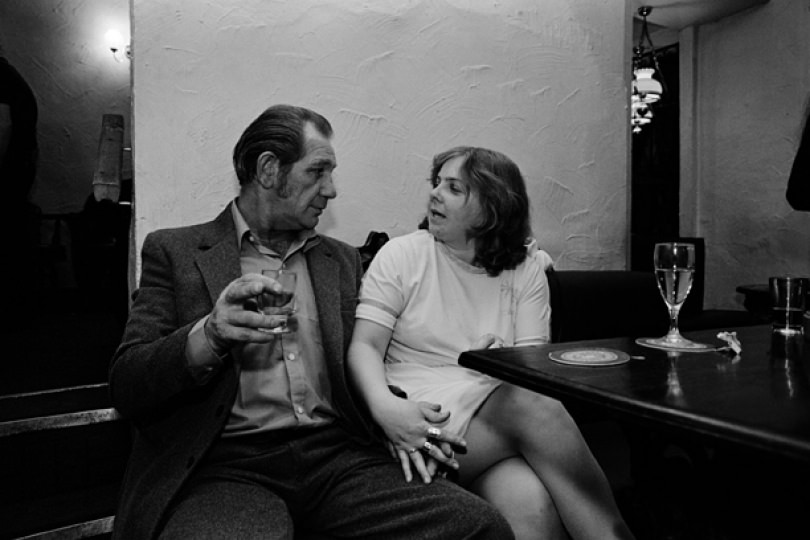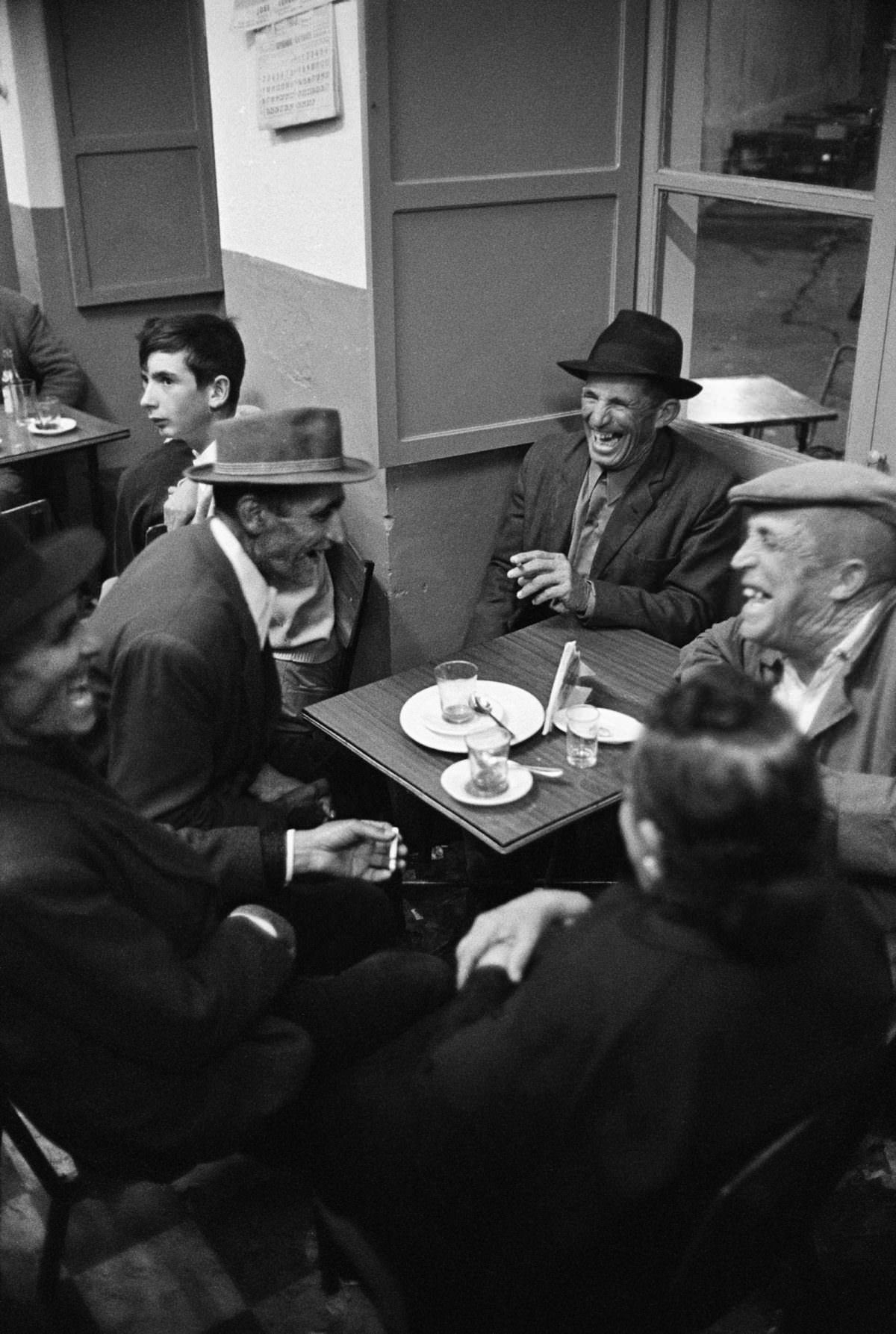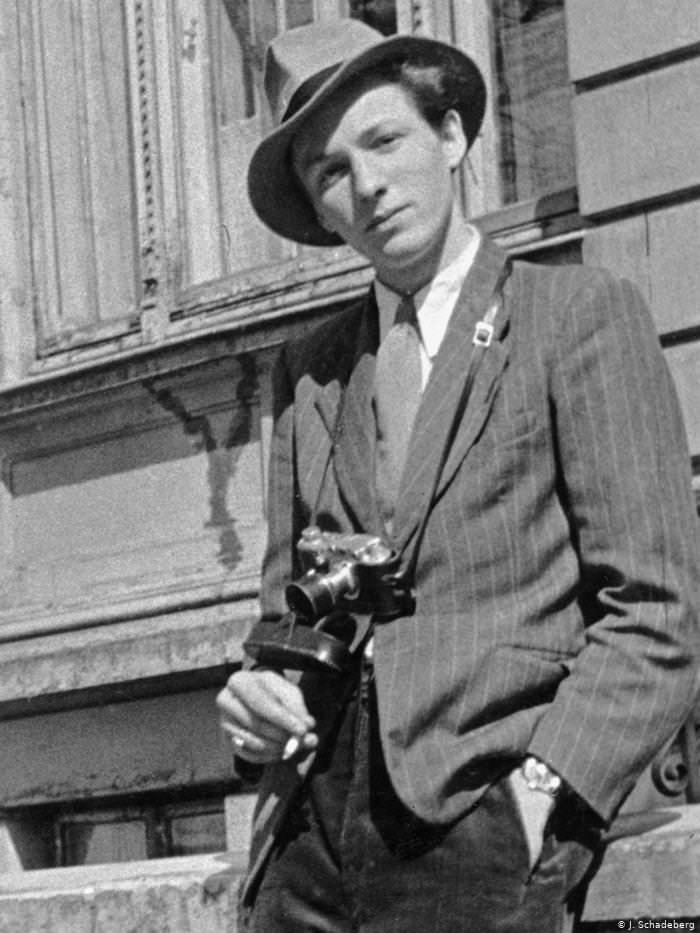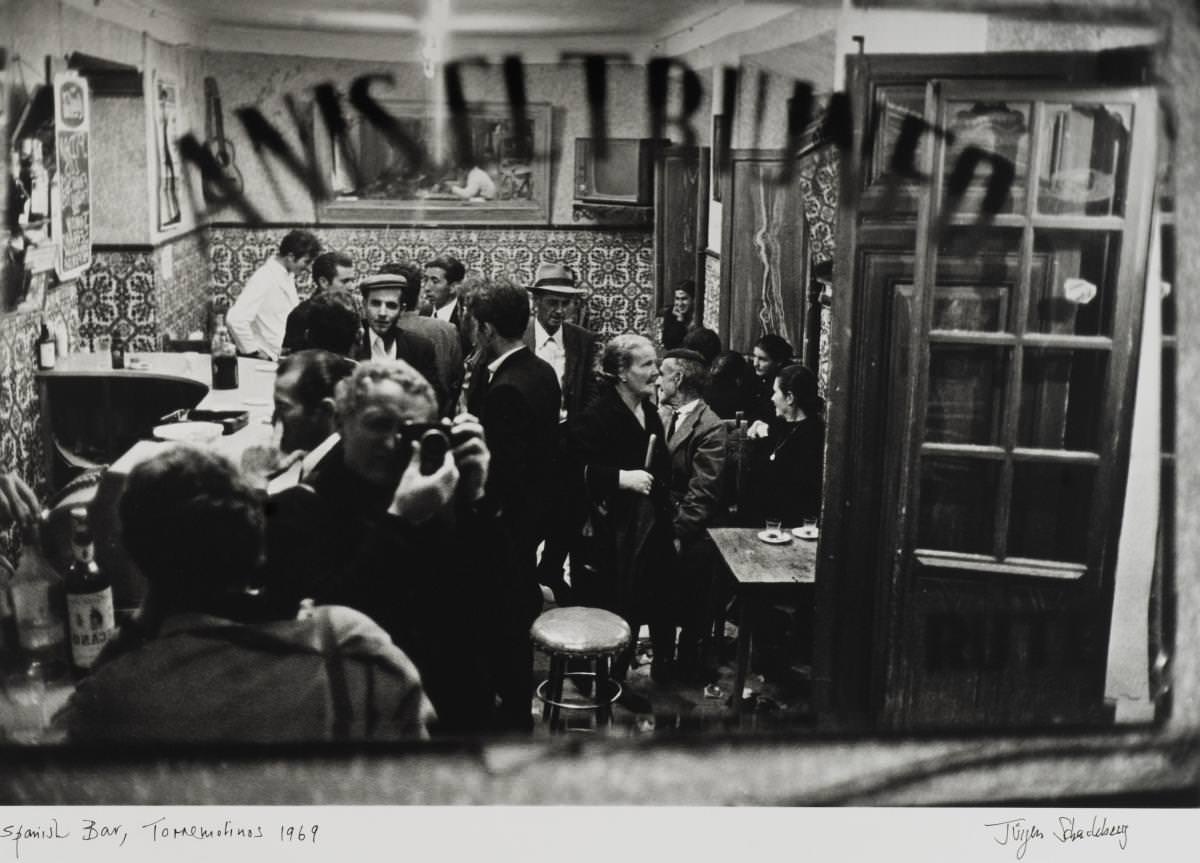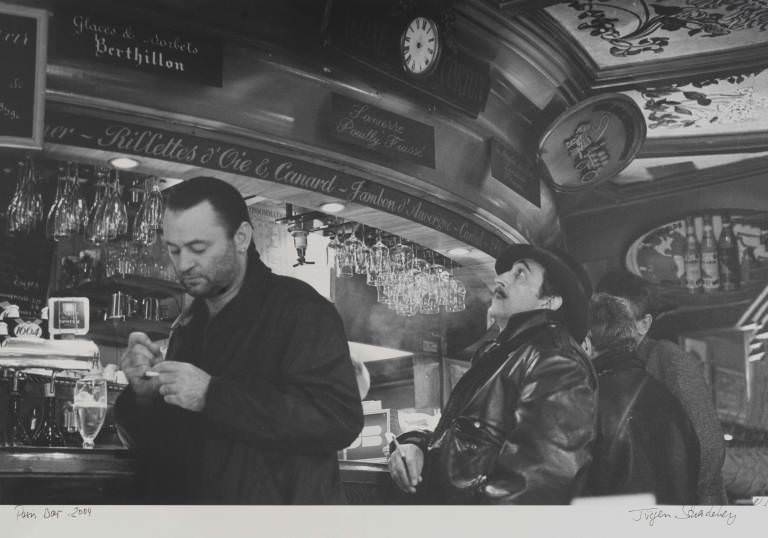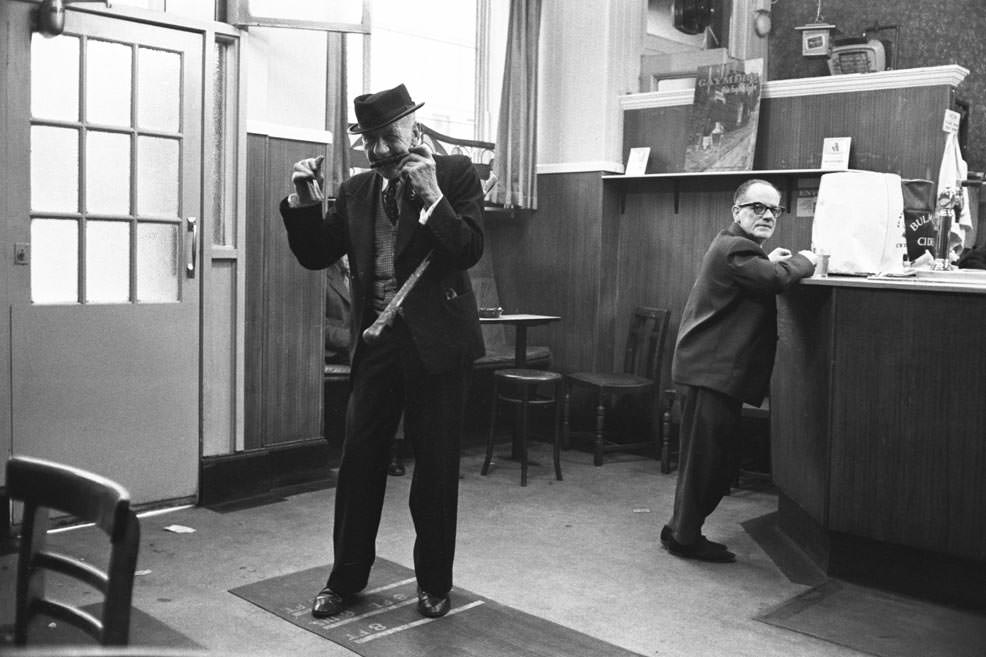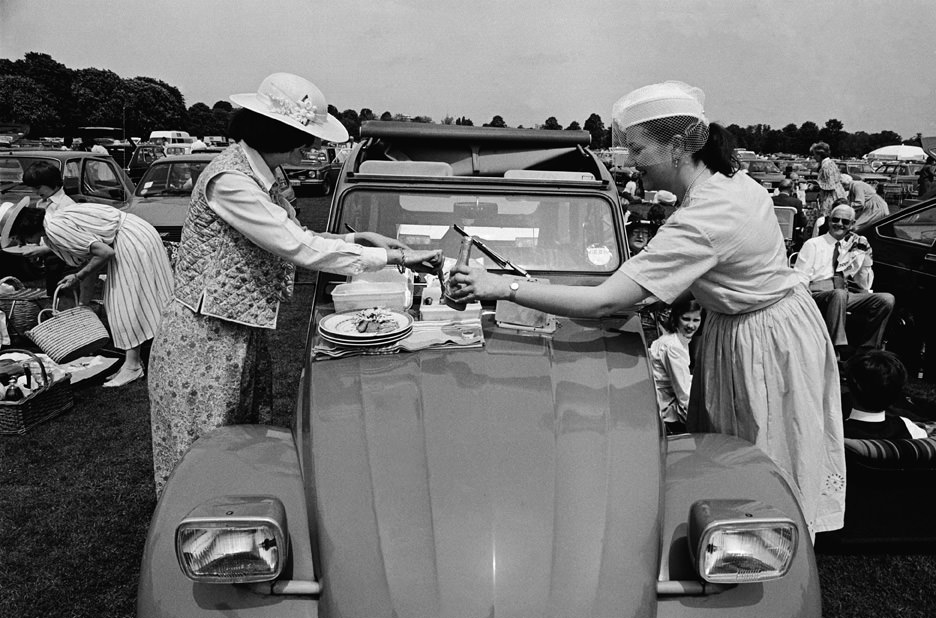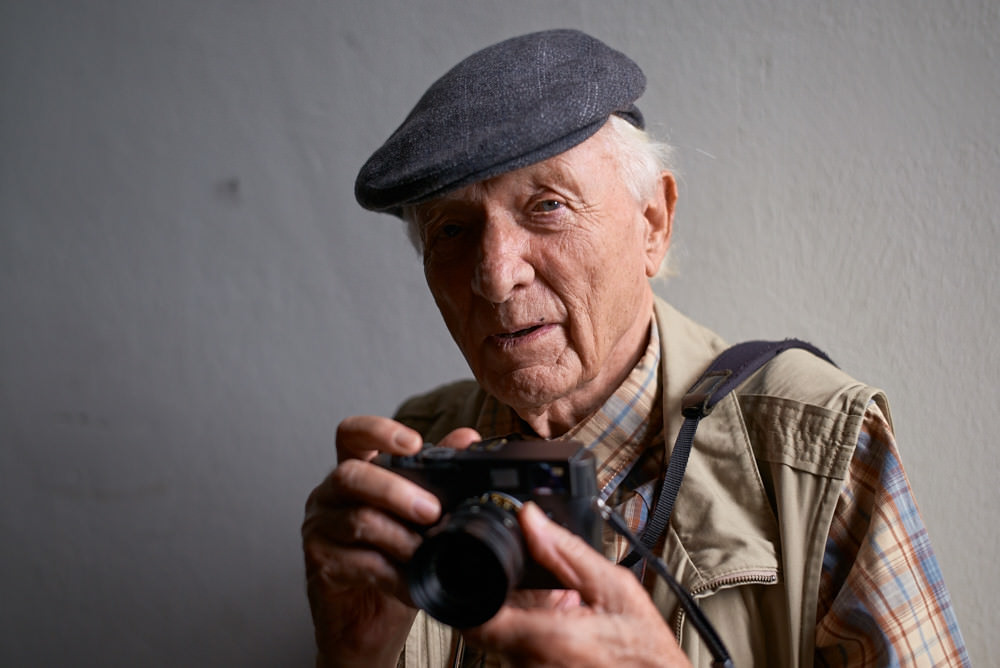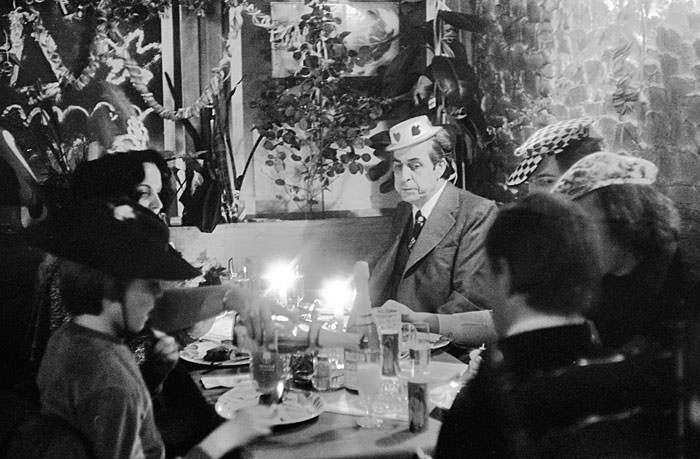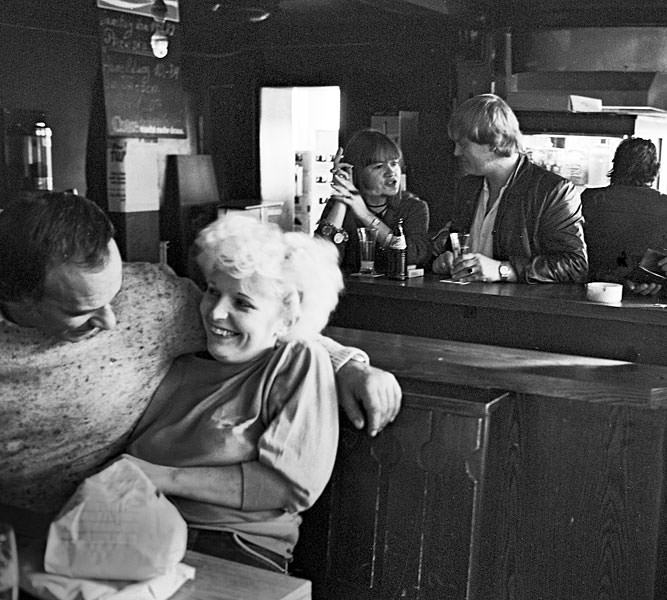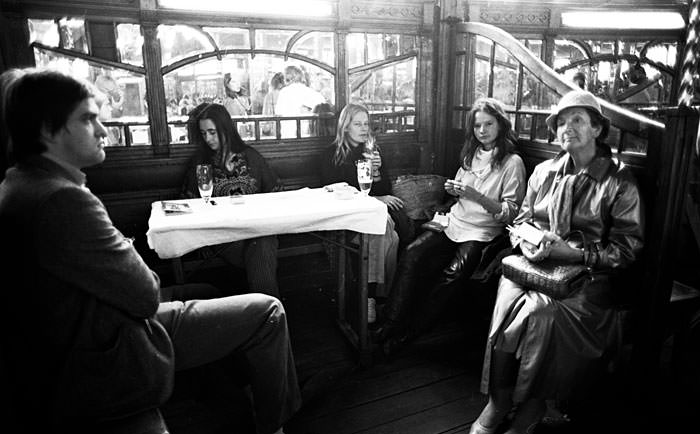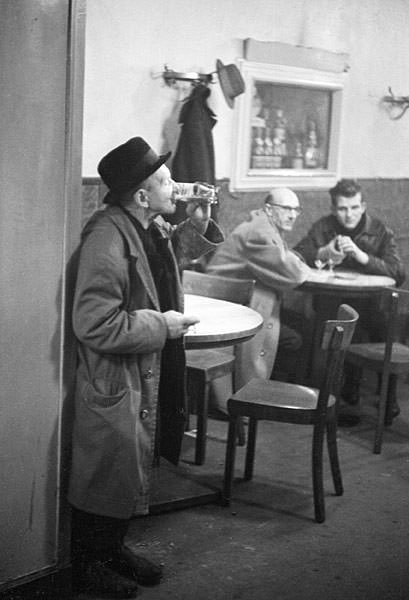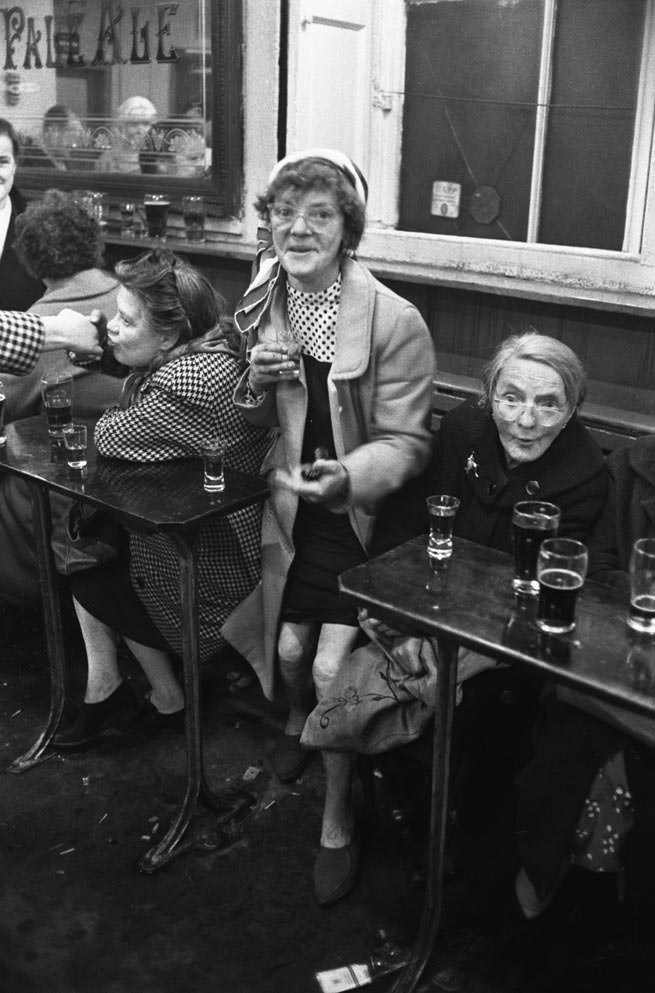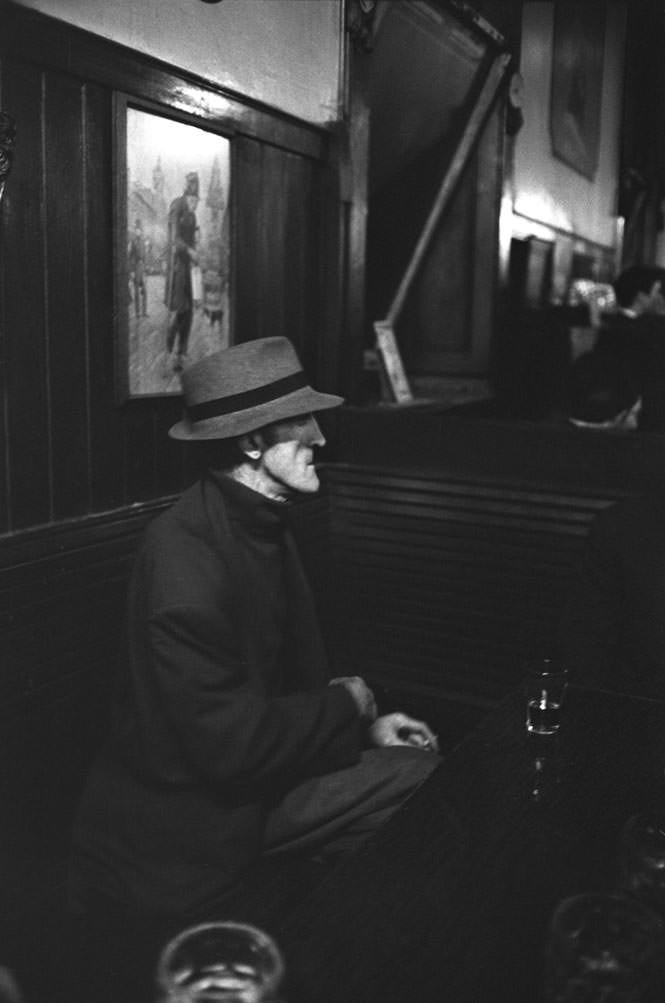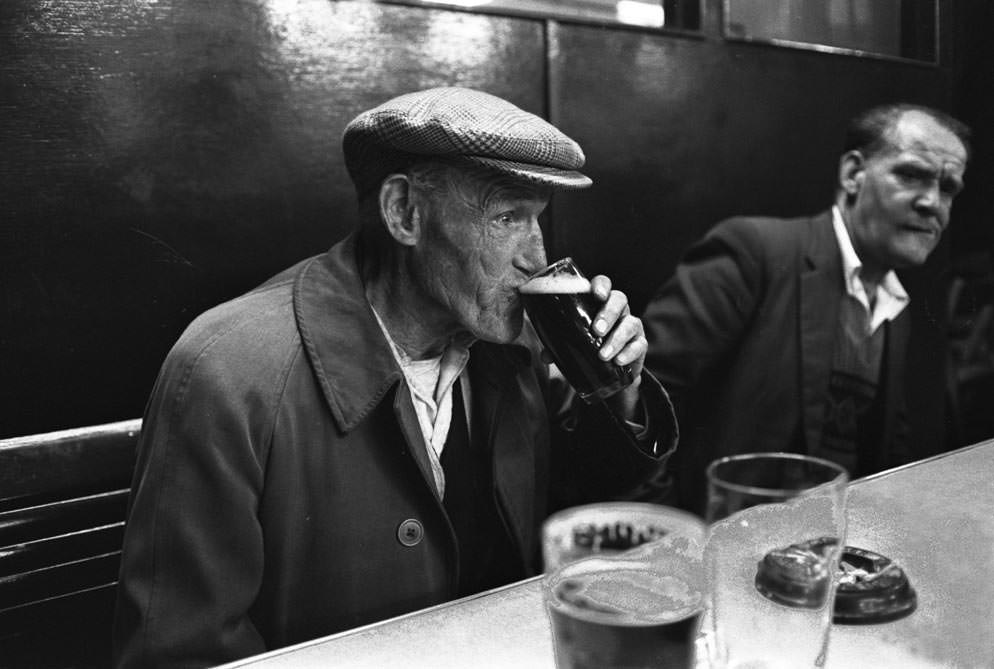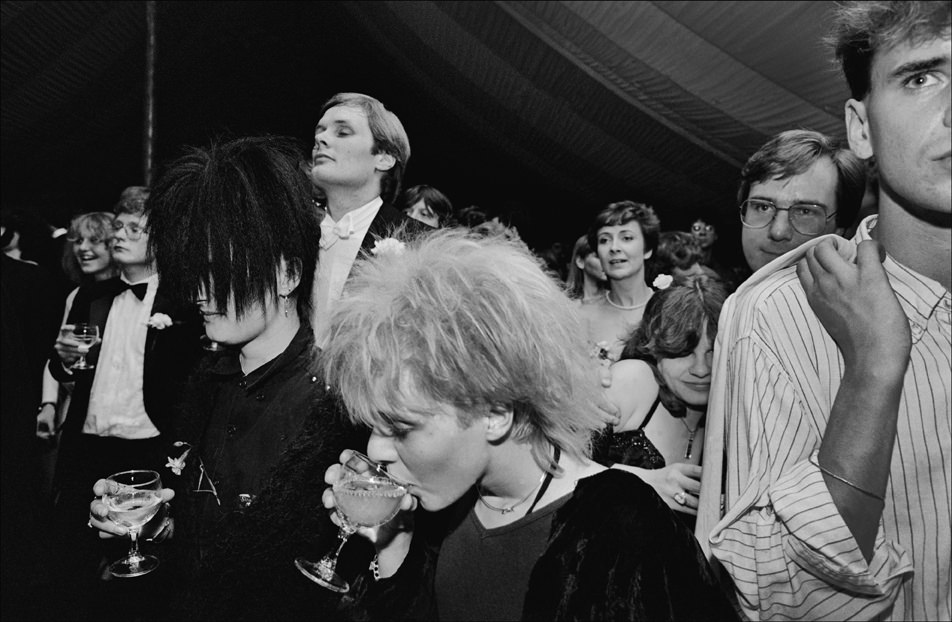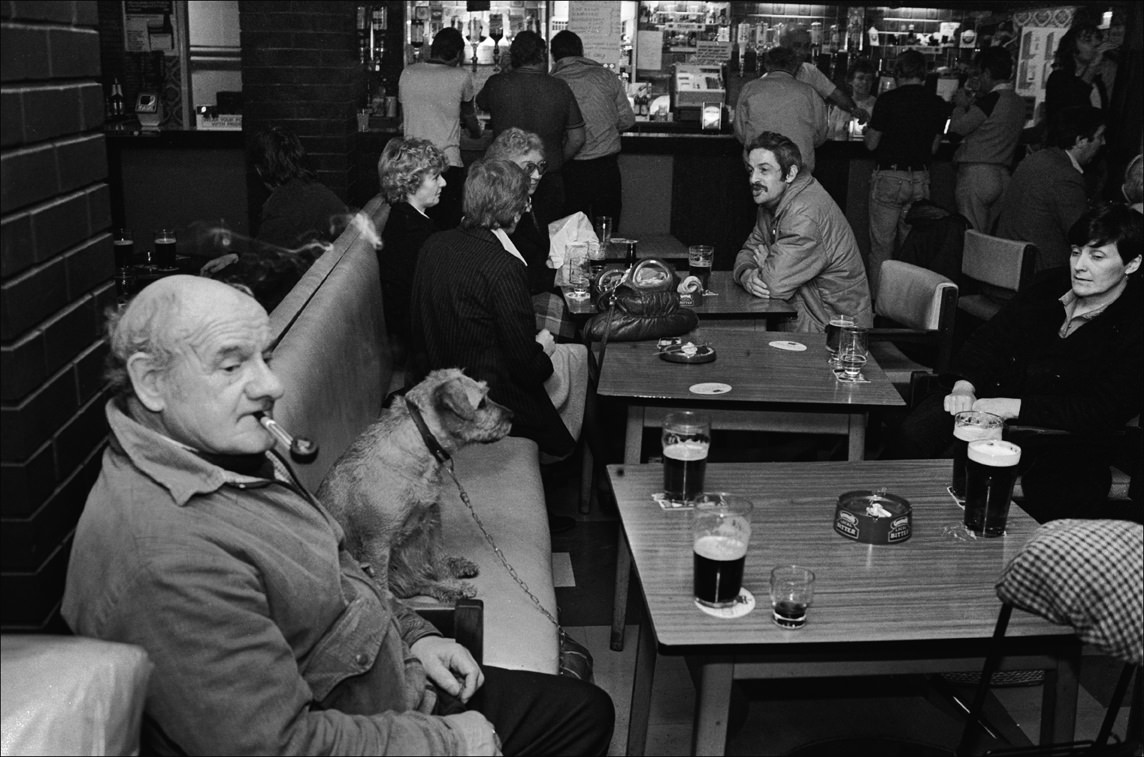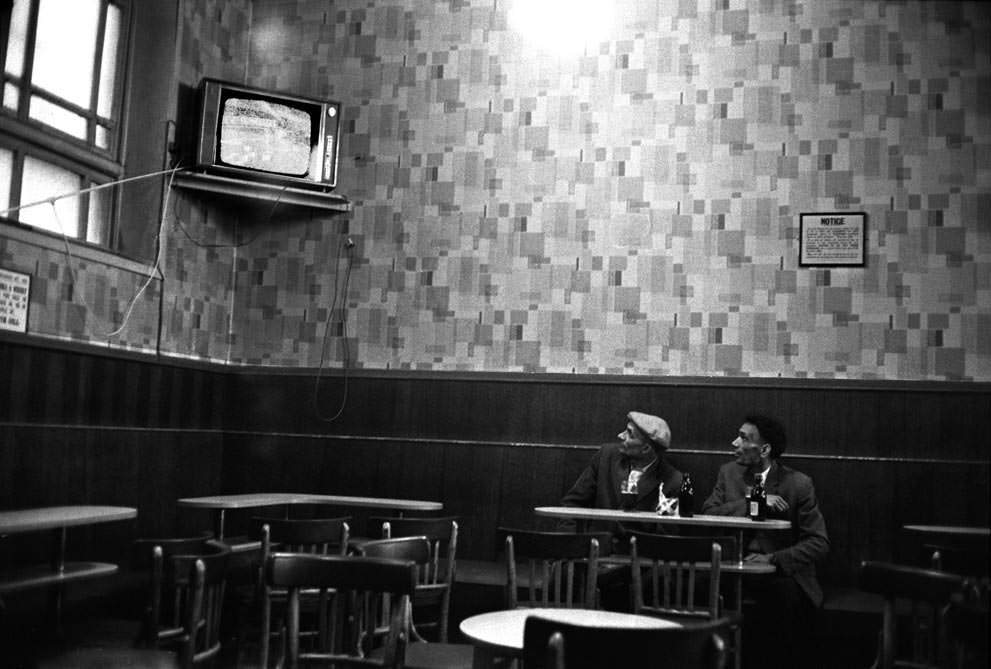Jürgen Schadeberg: Happy Hour
The Railowsky Foundation in Valencia, Spain, returns to exhibitions with “Happy Hour”, photographs by Jürgen Schadeberg from 16 July to 30 September 2020.
It is a series of 33 photographs around the joy of sharing a drink with people, in a special space such as bars This exhibition is a song for life and for the desire to share a cup in a bar with friends, a visual metaphor for what we all want to do, to go back to living as before COVID-19, without fears, without masks, being able to kiss and embrace.
The exhibition brings together 45 years of life in bars all over the world, through excellent positive copies in Schadeberg’s laboratory in the process of silver gelatin on barita paper, all in black and white. Schadeberg offers us a trip to bars in Glasgow, London, Cambridge, Berlin, Hamburg, Johannesburg and other places in South Africa, New York, Torremolinos, Malaga, Mijas, Cannes and Paris, from 1961 to 2006.
About the Author
Jürgen Schadeberg was born in Berlin, 1931, just as the National Socialists were goose-stepping out of the bier keller and on to the streets to destroy the country. When he was a child Schadeberg asked his Mother who was the angry man shouting on the radio? He knew instinctively this man was bad. The angry man was Adolf Hitler.
At the start of his teens, Schadeberg was forced into the Hitler Youth. He hated it and everything it represented. Sometimes he marched backward or wore bright colors instead of the standard-issue brown shirt. On other occasions, he mimicked Charlie Chaplin as der Führer. One day, the police knocked on his Mother’s door and suggested she get her son under control. The threat was real. Jewish neighbors disappeared every day.
After the war, Schadeberg worked as a trainee photographer. He was poor and hungry. He lived off bread and water. One day an editor noted how thin and hungry Schadeberg looked. He suggested he covered football matches and get paid for every goal he photographed. He earned money for food but learned to loathe football.
In 1950, Schadeberg moved with his family to South Africa. They thought it would be a better world away from racism and Nazis. The family arrived just at the moment Apartheid was inflicted on the country. Schadeberg began photographing the people and political movements. He became Chief Photographer, Picture Editor, and Art Director at Drum Magazine. Over the following decade, Schadeberg documented some of the most important figures and key moments in South African history–from Nelson Mandela, Moroka, Walter Sisulu, and Yusuf Dadoo, to the Defiance Campaign of 1952, the Treason Trial of 1958, the Sophiatown Removals, and the Sharpeville Funeral in 1960.
(Jürgen Schadeberg – Leica Hall of Fame Award 2018)
In the sixties, Schadeberg traveled across Europe photographing life in England, Scotland, Spain, and France. In the seventies, he traveled to America. He diversified into filmmaking but continued to document the world as he saw it. With a portfolio of work covering over seventy years, Schadeberg is now arguably our greatest living photographer.
Jürgen Schadeberg: Happy Hour
July 16 – September 30, 2020
La Fundación Railowsky, Valencia (Spain)
More info on:
http://www.fundacionrailowsky.org/
http://www.jurgenschadeberg.com/

